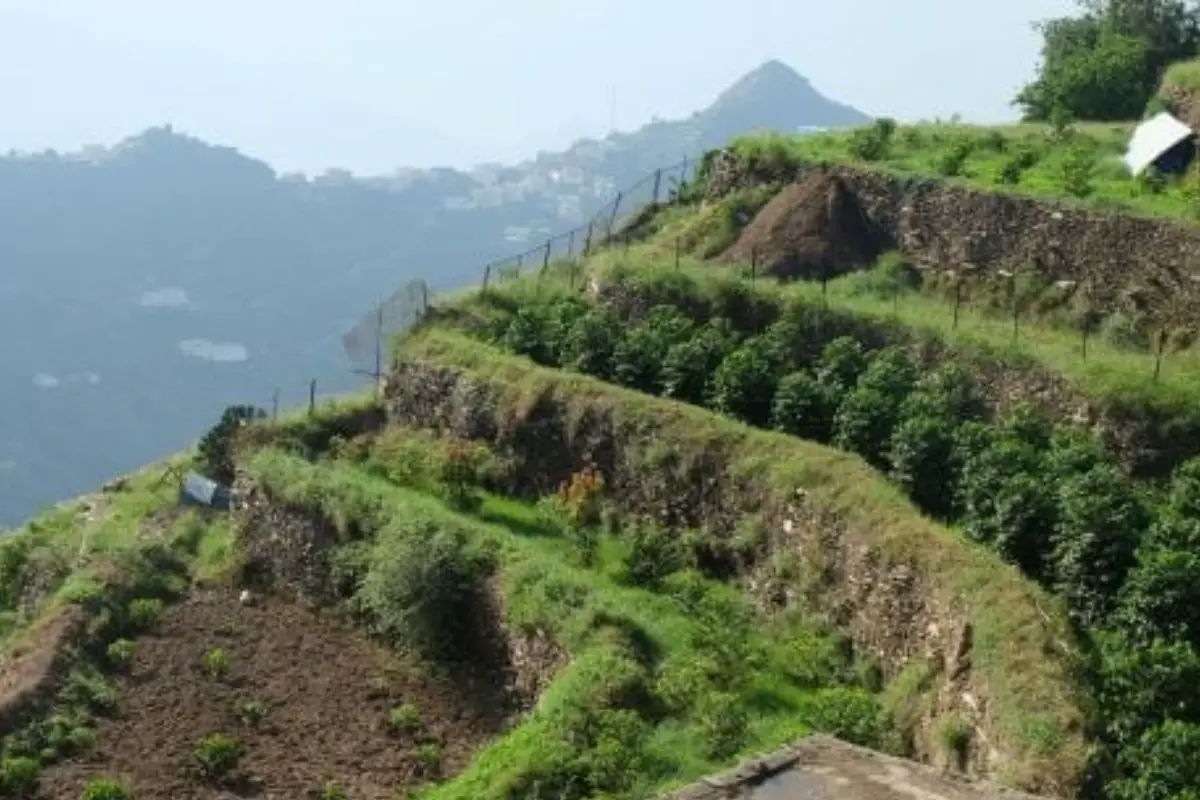In this article, readers will embark on a historical journey to explore the origins of coffee in Ethiopia, its spread to Arabia and the Ottoman Empire, and its eventual impact on global trade and culture. Through the various sections, the reader will discover the legend of Kaldi, the Ethiopian goat herder who stumbled upon coffee, the Arabian innovations in coffee processing and preparation, the development of social and political aspects revolving around the ubiquitous beverage in both Ottoman and Turkish societies, and ultimately the enduring traditions and significance of coffee in today’s global culture.

Origins of Coffee and Early Cultivation in Ethiopia
The history of coffee traces its roots back to the ancient coffee forests of Ethiopia. Although there is no definitive proof of when and how humans first consumed coffee, its origin story comes from unique narratives and early records about the cultivation and use of the beans in Ethiopian culture. To delve further into the origins of coffee, we must explore the story of Kaldi and the coffee plant and examine how this beverage became an integral part of Ethiopian life.
The Legend of Kaldi and the Discovery of Coffee
The most famous legend associated with the origins of coffee revolves around Kaldi, an Ethiopian goat herder who lived around the 9th century. As the story goes, Kaldi observed his goats displaying unusually energetic behavior after they had eaten the red berries from a certain plant. Intrigued by his goats’ newfound vigor, Kaldi decided to try the berries himself, finding that they had an invigorating effect on him as well.
Feeling the need to share his discovery, Kaldi took the berries to a local monastery, where the monk was not as receptive to the notion of energy-boosting berries. Skeptical of Kaldi’s claims, the monk threw the berries into a fire, believing them to be evil. However, as the berries roasted, the rich and enticing aroma of coffee emerged from the fire, leading the monks to extract the roasted beans and then crush and steep them in hot water. Thus, the first cup of coffee was made, and the monks would eventually use the drink to help them stay awake during long prayer sessions.
Although this story is more fable than fact, it illustrates the age-old appreciation for the stimulating properties of coffee in Ethiopian culture.
Early Cultivation and Use of Coffee in Ethiopia
The earliest credible evidence for coffee consumption dates back to the 15th century in the Sufi monasteries of Ethiopia, where the beans were used to make beverages that aided in meditation and religious practices. Despite the lack of verifiable information for an exact date or location, it is widely accepted that coffee was first cultivated in Ethiopia and later spread to other parts of the world.
The Oromo tribe in Ethiopia played a significant role in the early cultivation of the coffee plant, as they utilized the beans directly from wild plants growing in the region. Over time, they developed rudimentary methods of processing and preparing the beans, which eventually led to the familiar roasting and brewing techniques seen today.
As the popularity of coffee grew in Ethiopia, it became an essential crop cultivated in the highland regions of the country, particularly in the provinces of Harar and Kaffa (from which the term “coffee” is derived). The beans were commonly traded across the region, along with spices and other goods, and were eventually introduced to the Arabian Peninsula in the 15th century. From there, the cultivation and consumption of coffee spread to Egypt, Persia, Turkey, and eventually, Europe and the Americas.
Ethiopian Traditional Coffee Ceremony
The Ethiopian coffee ceremony holds cultural significance, serving as an integral aspect of social life in Ethiopia. It allows people to come together to engage in conversation, address conflicts, and build bonds. The ceremony usually begins with the roasting of green coffee beans in a flat pan over a fire and then grinding them using a traditional tool called a “mukecha.” The ground coffee is then brewed in a special clay pot called a “jebena” and served in small cups, traditionally accompanied by the burning of incense.
Guests participating in the Ethiopian coffee ceremony are customarily offered three rounds of coffee, with each round signifying a different blessing – Abol (first), Tona (second), and Baraka (third). It is considered impolite to refuse at least one cup of coffee during the ceremony.
The Ethiopian coffee tradition reflects the deep appreciation and long history of coffee in the country, underscoring its historical significance as the birthplace of coffee.
The Spread of Coffee to Arabia
Introduction of Coffee to Yemen
The history of coffee is intertwined with the rich tapestry of Arabian culture. It’s believed that the coffee plant was discovered in Ethiopia around the 9th century. However, it was in Yemen, in the 15th century, where coffee beans were first roasted and brewed, similar to how it’s consumed today. Sufi monks, in particular, used the beverage as a stimulant to stay awake during their evening prayers.
The prized coffee beans were brought from Ethiopia to Yemen, where cultivation began in earnest. At that time, Yemen was one of the wealthiest regions in the Arabian Peninsula, famed for its capital city of Sana’a and the port city of Al-Makha (Mocha). This port served as the primary distribution center for coffee grown in the mountainous regions and exported worldwide.
Coffee Production and Trade in the Arabian Peninsula
The booming coffee trade in Yemen established the country as the epicenter of the coffee world. The coffee trade profoundly impacted the economy, politics and even the religion of the region. Coffee production was closely guarded, and strict policies were enacted to maintain the Arab monopoly on the industry. This involved a ban on the export of fertile beans, ensuring that receiving countries could only consume, not cultivate, the crop.
Coffee quickly became an essential commodity, rivaling traditional trade goods such as spices and textiles. Coffee houses appeared and proliferated, serving as social hubs where poets, scholars, and politicians gathered to discuss the events of the day. With the integration into Arabian life, coffee slowly began to spread beyond the confines of the Arabian Peninsula.
Establishment of the First Coffeehouses in Mecca and Medina
Alongside trade expedites, religious pilgrims also contributed to the spread of coffee in Arabia. Muslim pilgrims traveling for the Hajj brought the drink to Mecca and Medina, quickly turning coffeehouses into integral social institutions. These establishments, known as qahveh khanehs, fostered creativity, debate, and intellectual growth.
Like Yemen, Mecca and Medina experienced a boom in coffee production, cultivation, and trade as the beverage became synonymous with Arabian culture. By the early 16th century, coffeehouses and coffee consumption were widespread across the Islamic world, with the introduction to Egypt, Persia, and Turkey.
Arabian Innovation in Coffee Processing and Preparation
As coffee spread throughout Arabia, innovations in cultivation and the processing of beans ensued. Techniques such as sun drying and roasting were developed to preserve and enhance the beans’ flavors, leading to the creation of different coffee blends, grinds, and roasts. Innovations in brewing, such as boiling the grounds in water, led to the development of brewing styles that varied by region.
The Arabs also refined the process of coffee preparation, with many practices and traditions forming an integral part of the Arabian coffee culture. Traditional coffee-serving ceremonies, fueled by the unique Arabian coffee blend, often included complicated rituals and distinctive coffee pots called dallahs, emphasizing the significance and prestige of the beverage.
Expansion of Coffee Cultivation to the Ottoman Empire

Introduction of Coffee to Istanbul and Turkey
Coffee’s arrival in Istanbul, which marked its introduction to the Ottoman Empire in the early 16th century, is attributed to Syrian traders and Ottoman Governor Özdemir Pasha. Turkish chroniclers documented that Özdemir Pasha brought coffee beans to Istanbul and introduced them to Sultan Suleiman the Magnificent. Recognizing the potential profitability of coffee, Sultan Suleiman embraced and promoted the beverage, establishing coffee as a luxury product within the empire.
The Ottoman Empire’s Role in the Spread of Coffee Consumption
Under Ottoman rule, coffeehouses spread throughout the empire, becoming vibrant centers of social and intellectual life. Much like their Arabian counterparts, Ottoman coffeehouses served as collective spaces for scholarly discussions, political gatherings, and artistic events.
With the assistance of international traders and travelers, the Ottomans helped extend coffee’s reach beyond the Middle East, transmitting their distinctive coffee culture and brewing techniques to Europe and, eventually, the world.
Turkish Coffee Culture and its Influence on Society
The introduction and adoption of coffee in Ottoman society ushered in a unique set of customs, rituals, and traditions. Key among these is the establishment of kahvehane, the Turkish coffeehouse.
Kahvehane served as a focal point in both urban and rural communities, providing a venue for social gatherings, intellectual discussions, and artistic performances. The kahvehane also functioned as a vital communication point, where news and information were disseminated and scribes were made available for the illiterate.
The method of preparing and presenting Turkish coffee is distinct from that of its Arabian counterparts. At its core, a finely ground blend of beans is boiled with water and sugar in a special pot called a cezve. This unique cooking process produces a rich, strong brew with a distinctive frothy layer, typically served in small cups accompanied by sweets.
Ottoman Dominance and Control of the Coffee Trade
Possessing a virtual monopoly on the coffee trade, the Ottomans implemented extensive regulations to maintain control over the industry. This included stipulations on cultivation, processing, and distribution, as well as stringent quality control measures. These policies allowed the empire to maintain its dominance in the coffee trade and rapidly expand its market reach, solidifying coffee as a cornerstone of Ottoman culture and global influence.
Impact of Coffee on Trade and Global Expansion
Arabian and Ottoman Monopoly on the Coffee Trade
The Arabian and Ottoman empires fundamentally shaped the coffee trade through the 16th and 17th centuries. As the foremost producers and exporters of coffee, these powers maintained a tight grip on the global coffee trade, fostering their vast wealth and prominence.
European Adventurers and Merchants Seeking Coffee Seeds
European nations and merchants, drawn by the allure of huge potential profits, avidly sought to break the Arabian-Ottoman monopoly on coffee production. Adventurers, traders, and diplomats alike engaged in covert and daring acts of coffee appropriation, acquiring fertile seeds and smuggling them out of the well-guarded empire.
The Role of the Dutch in Breaking the Arabian-Ottoman Monopoly
The Dutch East India Company played a key role in breaking the Arabian-Ottoman control of the coffee trade. In 1616, Dutch traders managed to obtain live coffee plants, which they transplanted to the Maritime Southeast Asia, establishing the first coffee plantation in the Dutch East Indies (modern-day Indonesia). This venture marked the first successful cultivation of coffee outside the Arabian Peninsula and the Ottoman Empire, triggering a new era of global coffee expansion.
Establishment of Coffee Plantations in Asia and the Americas
As coffee plantations sprouted in the Dutch East Indies, European colonization in Asia and the Americas encouraged further expansion of coffee cultivation. The French established coffee plantations in the Caribbean, while the Portuguese introduced coffee to Brazil, ultimately transforming the South American nation into the world’s largest coffee producer.
With the establishment of coffee plantations across the globe, the previously unchallenged Arabian-Ottoman coffee monopoly crumbled, giving rise to new players in the coffee market. This worldwide cultivation of coffee drove its proliferation as a beloved global beverage and catalyst for cultural, social, and political changes.
Legacy of Arabian and Turkish Influence on Coffee Culture
The history of coffee can be traced back to the Arabian Peninsula and Turkey, where the brewed beverage originated approximately in the 15th century. It was initially introduced as a religious drink amongst Sufi circles and eventually spread to the Ottoman Empire. The rich heritage of coffee is interlinked with the historical and cultural traditions of these regions, which in turn, continue to find their presence in the modern coffee culture. Arabian and Turkish influences on coffee have had a lasting impact on not just coffee preparation and consumption but also on society, politics, art, manufacturing, and the global economy.
Enduring Traditions in Modern Coffee Culture and Preparation
Arabian and Turkish coffee customs have left a lasting impression on the coffee culture that persists today. Traditionally, coffee beans were roasted, crushed, and boiled in a special pot called a cezve or ibrik. The resulting brew was then poured into small cups, allowing the fine coffee grounds to settle. The Arabian and Turkish coffee preparation takes a more extensive and ritualistic approach, emphasizing on the importance of sharing and hospitality.
One of the key elements in Arabian and Turkish coffee culture is the presentation and serving of coffee, often accompanied by sweets, fruits, or nuts. Today, this influence manifests in many coffee shops, where people gather to socialize or conduct business meetings, often partaking in delicacies, pastries, and other accompaniments.
The traditional coffee beans used in Arabian and Turkish coffee preparations were typically dark and robust. This strong flavor profile and intricate preparation methods have influenced modern coffee, with many specialty coffee shops offering more intense, full-bodied options, akin to that of the historical Turkish brews.
Global Impact of Coffee and its Influence on Manufacturing and Economy
The Arabic and Ottoman Empire’s love for coffee fueled the widespread readiness to adopt the enticing beverage as a readily available commodity. It was from these Middle Eastern origins that coffee was introduced to Europe and the rest of the world. As coffee took hold in the global market, it paved the way for an entirely new industry, spanning cultivation, manufacturing, and distribution.
Coffee plantations took root in Latin America, Africa, and Asia, driven by the increased demand for coffee beans in Europe and North America. Today, coffee is one of the most traded commodities in the world, with millions of people employed across the supply chain, from farming to roasting to serving.
In addition to influencing the worldwide coffee trade, Arabian and Turkish coffee heritage also contributed to the development of various brewing methods and brewing equipment. Examples such as espresso machines, moka pots, and the French press can trace their origin back to the initial techniques and apparatus used in preparing coffee in the Arabian Peninsula and Turkey.
Coffee’s Lasting Effects on Society, Politics, and Art 
It is almost impossible to overlook the profound social, political, and artistic impact that Arabian and Turkish coffee culture has had on the world. In these regions, coffee houses, also known as kahvehane in Turkey and qahveh khaneh in Arabia, served as gathering places for intellectual discourse, political debate, and cultural expression.
The emergence and spread of coffeehouses in Europe, initially inspired by the Arabian and Turkish models, played a significant role in shaping the Enlightenment era. Esteemed thinkers, artists, writers, and politicians frequented such establishments to discuss ideas, share news, and indulge in creative expression over a cup of coffee.
Coffee also found its way into literature, music, visual arts, and popular culture. Some of the most well-known artists, such as Leonardo da Vinci, Johann Sebastian Bach, and Ernest Hemingway, drew inspiration or solace from the captivating beverage.
In conclusion, the legacy of Arabian and Turkish influence on coffee spreads across multiple facets of modern society. From the meticulous preparation and presentation methods to the significant impact on the global economy, society, and politics, the history and heritage of coffee culture from these regions have left an indelible mark on the world, which we continue to cherish and explore.
FAQs on The Spread of Coffee Cultivation to Arabia and Turkey
When did coffee cultivation begin in Arabia?
Coffee cultivation started in Arabia during the 15th century, primarily in the country of Yemen, where the beans were first cultivated after being smuggled from Ethiopia (Pendergrast, 1999).
How did coffee cultivation spread to Turkey from Arabia?
The spread of coffee cultivation to Turkey began during the 16th century due to the Ottoman Empire’s expansion, leading to the establishment of coffeehouses in Istanbul and wider Turkish society (Ellis, 2004).
What were the initial uses of coffee in Arabia and Turkey?
In Arabia and Turkey, coffee was initially used for religious practices and ceremonies. Later, it became a popular social drink served in coffeehouses, fostering both intellectual and social discussions (Wild, 2005).
What role did Sufi monasteries play in the spread of coffee in Arabia?
Sufi monasteries were instrumental in the spread of coffee in Arabia, as they used the beverage in their religious ceremonies to help maintain wakefulness during nighttime prayers and rituals (Hattox, 1985).
How did coffee cultivation impact the economy in Arabia and Turkey?
Coffee cultivation significantly impacted the economy in Arabia and Turkey by giving rise to a thriving coffee trade, creating job opportunities, and promoting the growth of coffeehouses that functioned as social and cultural hubs (Topik & Trachtenberg, 2013).
What was the role of coffeehouses in Turkish society?
Coffeehouses played a vital role in Turkish society as they served as social hubs attracting people from various backgrounds to gather, discuss, and exchange ideas while enjoying a cup of coffee (Çakıcı & Başaran, 2006).
References:
Çakıcı, C., & Başaran, M. (2006). Coffeehouses and the innovation system in the Ottoman Empire: A structural analysis. _International Journal of Turkish Studies, 12_(1-2), 117-130.
Ellis, M. (2004). _A history of coffee._ London: Studio Clio.
Hattox, R. S. (1985). _Coffee & coffeehouses: The origins of a social beverage in the Medieval Near East._ Seattle: University of Washington Press.
Pendergrast, M. (1999). _Uncommon grounds: The history of coffee and how it transformed our world._ New York: Basic Books.
Topik, S. C., & Trachtenberg, M. (2013). _The coffee book: Anatomy of an industry from crop to the last drop._ New York: The New Press.
Wild, A. (2005). _Coffee: A dark history._ New York: W. W. Norton & Co.